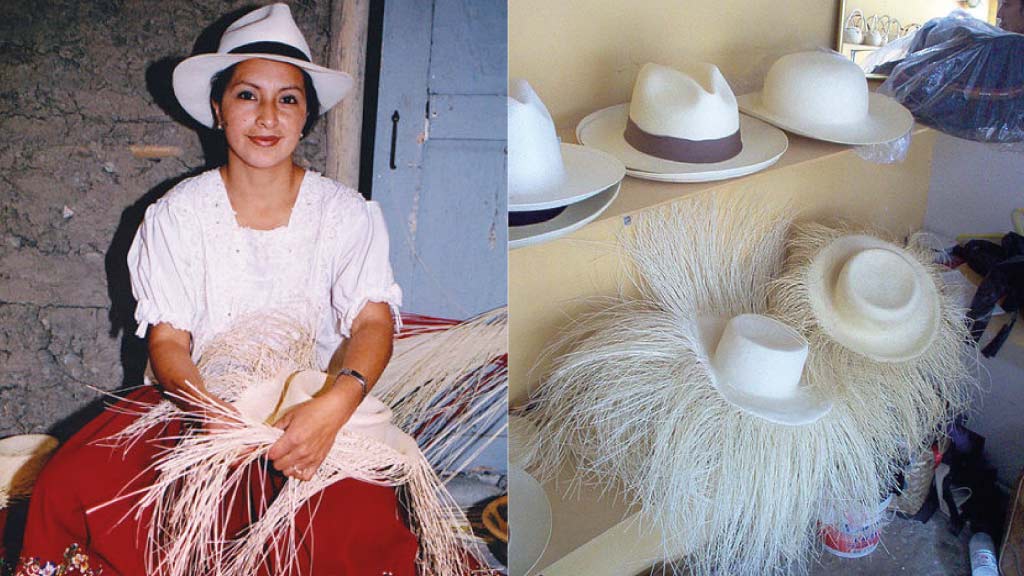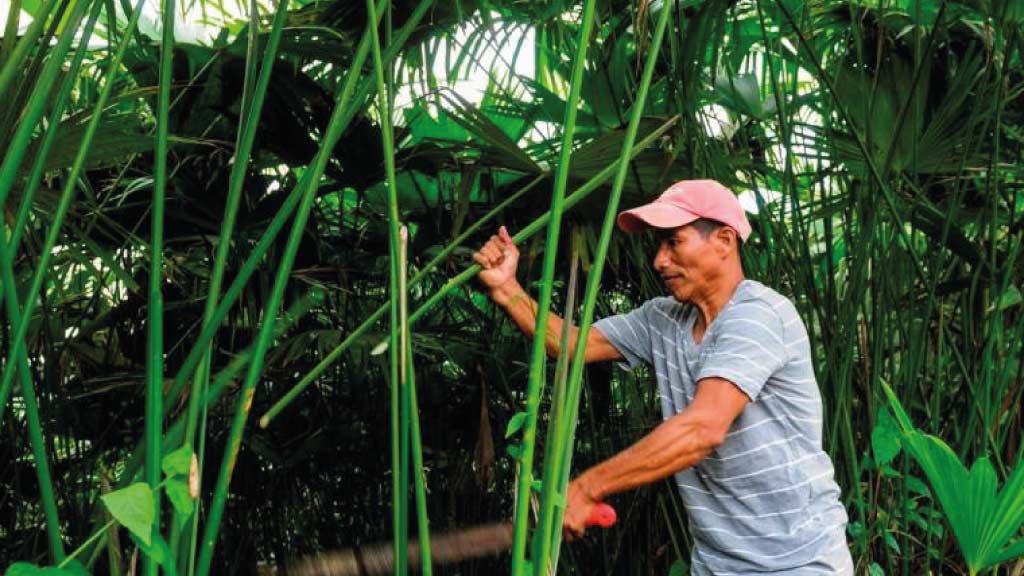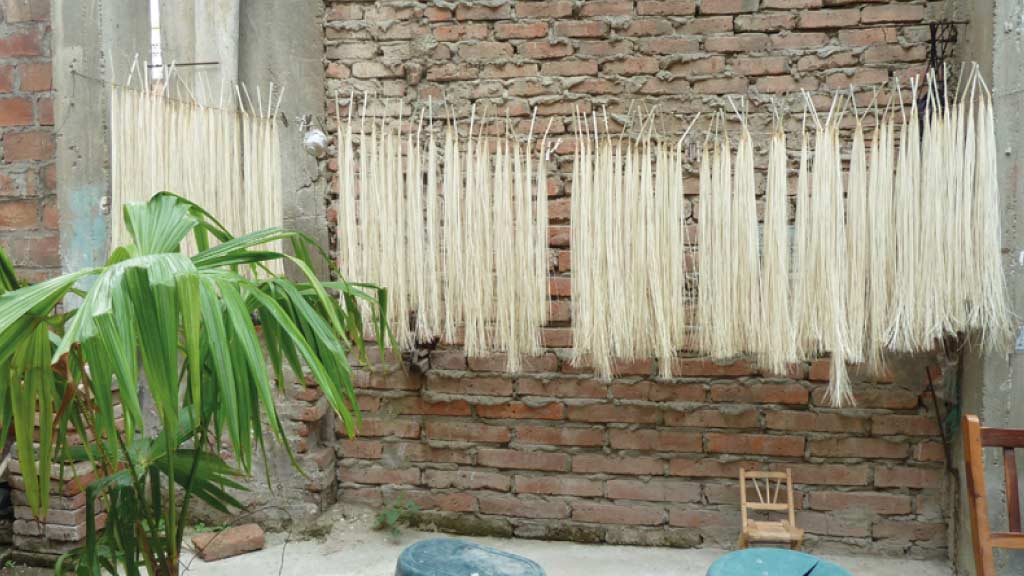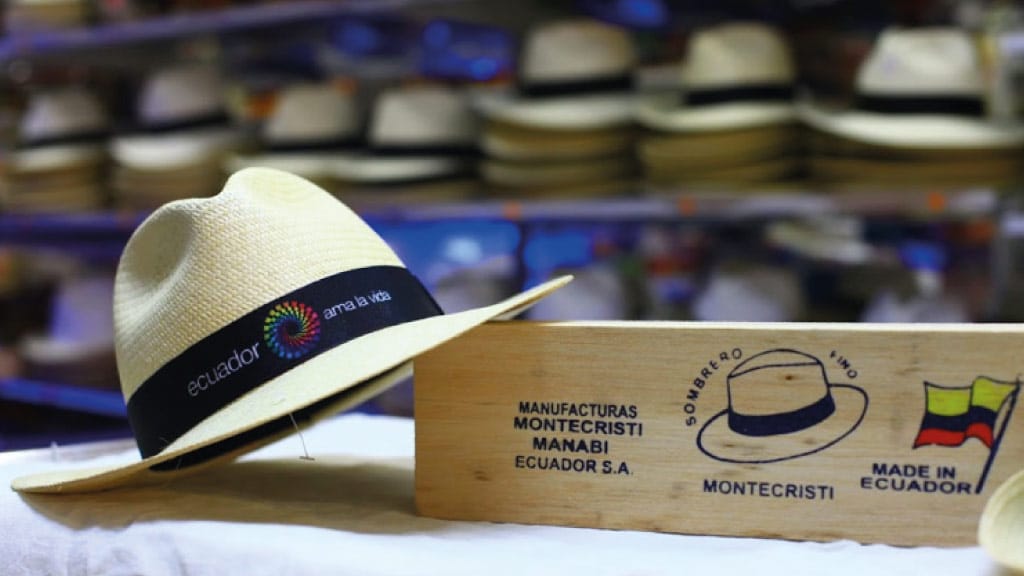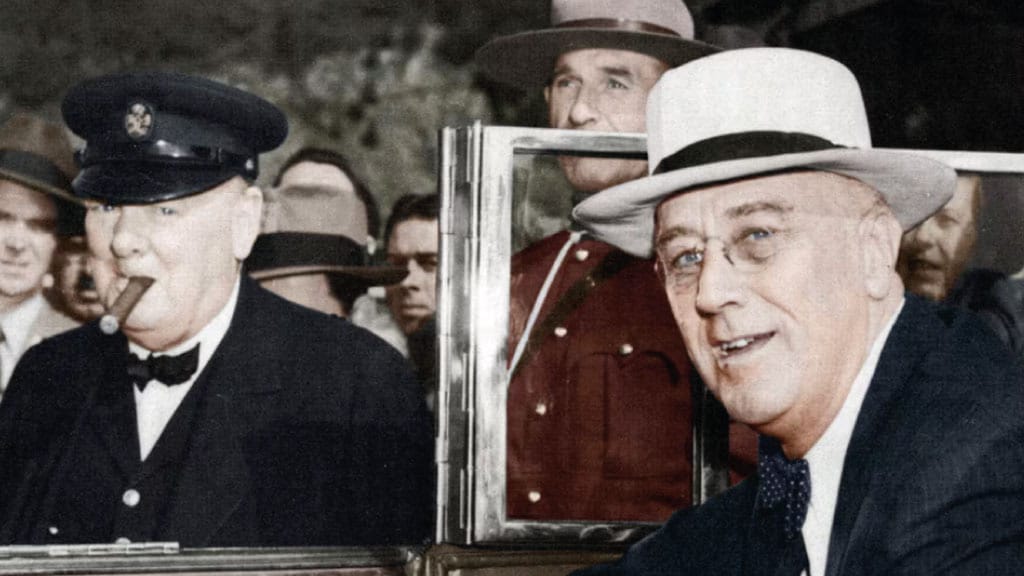Ecuador Panama Hats
Ever wondered why something called a "Panama hat" actually comes from Ecuador? Yeah, that threw me for a loop too!
These iconic white straw hats—you know, the ones that scream "I'm on vacation" and somehow make everyone look instantly classy—have been one of Ecuador's best-kept-secrets for centuries.
Ecuadorian Panama hats are truly iconic. Their timeless charm, elegance and sophistication has led to famous people from Barack Obama to Winston Churchill and Princess Diana to wear them.
So, let me take you on a journey through the fascinating world of these misnamed masterpieces, where tradition meets fashion, and where a single hat can take months to create and cost thousands of dollars.
We’ll journey around Ecuador to learn everything about the Panama Hat process first hand, from the palm harvest, to intricate hat weaving, and exportation around the globe.
Best of all, we’ll let you in on the secret of where to find the best Panama hats in Ecuador at the cheapest prices.
SECURE YOUR ECUADOR TRAVEL
Get a FREE personalised quote todayHow come Panama Hats originate from Ecuador?
Let’s deal with the elephant in the room first.
If the hats are made in Ecuador, then why are they named after Panama?
Truth is, back in the old days, most South American goods were shipped to the Isthmus of Panama before sailing for their destinations in Asia, the Americas and Europe. This was true of straw hats woven in Ecuador, which were both durable and cheap.
The story goes that these legendary hats earned their misleading name when workers building the Panama Canal wore them for protection against the brutal sun.
When photos of Theodore Roosevelt sporting one during a canal visit hit newspapers worldwide, everyone wanted a "Panama" hat—even though Ecuadorian fingers had woven every single one!
Much to Ecuador’s dismay, the name stuck, and Panama continues to be linked to Ecuadorian straw hats to this day.
Why are Ecuadorian Panama Hats so famous?
Today, cheap imitation Panama Hats are produced in China and other countries. So, why are more expensive Panama Hats from Ecuador still so highly prized?
Quite simply, the quality of the other products cannot be compared with the Ecuadorian toquilla palm hats.
The toquilla palm raw material harvested in Ecuador comes from the Carludovica palmata plant, known for its unique strength and flexibility. Palm straw from other parts of the world just won’t do.
Then there’s the tightness off the weave. The best quality Panama hats in Ecuador are still woven by hand with up to 3000 weaves per square inch. Factory made hats in China don’t even come close.
Finally, there’s the prestige of owning a genuine Panama Hat. Only those woven and fabricated in Ecuador can boast that claim.
Where to find Panama Hats in Ecuador?
Our Panama Hat journey in Ecuador begins in the small coastal town of Montecristi, where the toquilla palms are harvested and the famous Super-Fino hats are woven.
From there we’ll head into the Andean highlands to the UNESCO city of Cuenca and the small hat-weaving village of Chordeleg. Cuenca is famous for Panama Hat production and exportation.
Finally, we’ll cover the cities of Quito, Guayaquil, and again Cuenca, to explore the finest Panama Hat boutiques with the very best prices.
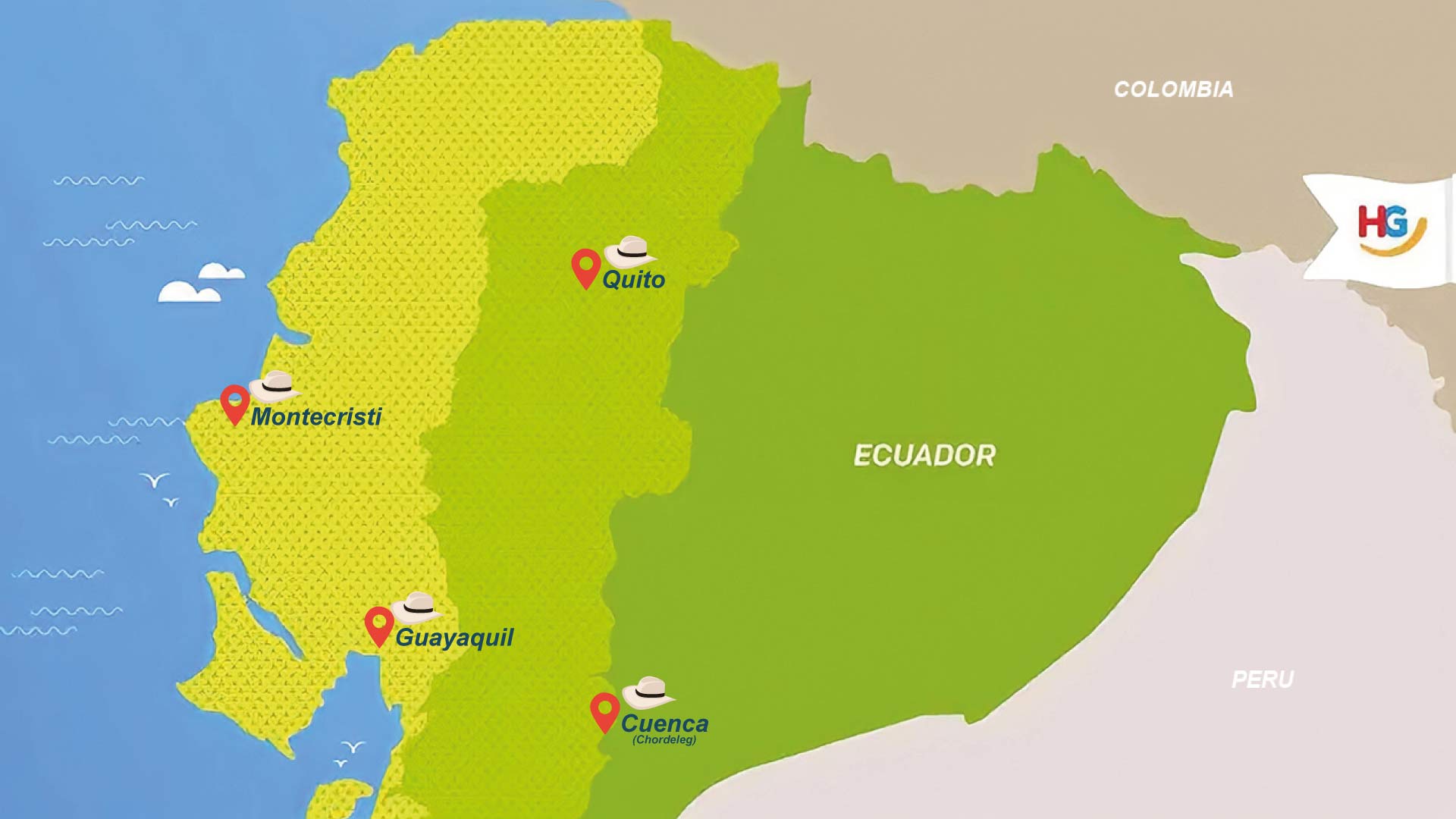
The Famous Montecristi Super-Fino Panama Hat
The Montecristi Superfino is the crown jewel in the world of Panama hats – the Rolls-Royce of headwear, if you will.
The Montecristi Superfino isn't just a hat; it's a masterpiece of craftsmanship that represents the pinnacle of Panama hat artistry. Coming from the small coastal town of Montecristi in Ecuador's Manabí province, these hats are considered the finest and most coveted Panama hats in the world.
What makes a Superfino truly "super" is the incredibly fine weave. Master weavers (called "tejadores") work with split toquilla palm fibers so thin they're almost translucent. The finest Superfinos can have more than 2,000-4,000 weaves per square inch! This creates a texture so smooth and fine that the hat appears almost silky.
The creation of a single Superfino is a painstaking process that can take anywhere from 3-8 months of dedicated work. The most exceptional pieces might even take up to a year to complete.
A genuine Superfino is so finely woven it can hold water and, when rolled, can pass through a wedding ring – traditional tests of quality that dealers and collectors still use today. They're also incredibly lightweight and breathable despite their tight weave.
Sadly, this art form is slowly dying out. In its heyday, there were nearly 2000 artisans weaving hats in Montescristi, today there are fewer than 50. Young people are reluctant to learn the traditional weaving techniques, while master weavers with decades of experience are simply not getting any younger.
That said, Montecristi folk are proud of their heritage, so it’s still possible to find weavers and hat shops here, and soak up the atmosphere of where the Panama Hat journey really began.
Chordeleg Panama Hat weavers
Another Ecuadorian town famous for Panama Hat weaving is Chordeleg, in the Southern Andes, close to Cuenca.
Locals of this charming town have been hat-weaving for centuries, and the tradition continues today as an important part of the local culture.
Each hat is meticulously crafted by hand, with skills passed down through generations of artisans. Most Chordeleg hats are then sold to hat factories in Cuenca for final processing.
Today, visitors to Chordeleg community can meet hat weavers, learn more about the weaving process, and even buy handicraft Panama Hats here.
Panama Hats in Cuenca Ecuador
Stepping through the doors of the Homero Ortega Panama hat factory in Cuenca feels like walking into a living museum where tradition and craftsmanship have thrived since 1899.
This family-run business, now in its fifth generation, offers one of the most authentic and comprehensive Panama hat experiences in Ecuador.
The tour begins in their small but informative museum section, where your guide—often a member of the Ortega family—greets you with warm Ecuadorian hospitality. The walls are lined with photographs documenting the company's century-plus history and the evolution of their craft. Glass cases display historic tools, vintage hat designs, and impressive examples of their finest work, including some jaw-dropping superfinos.
As you move through the factory, the first thing that hits you is the earthy, grassy smell of toquilla straw—the essential raw material harvested from the coastal regions. In the initial processing area, workers sort through bundles of raw straw, selecting and classifying each strand by quality, thickness, and color.
Next comes the processing area, where the raw woven hats undergo bleaching, shaping, and blocking. The blocking room is particularly interesting, filled with antique wooden hat molds in various shapes and sizes. Here, craftsmen use steam pressure to transform the raw weaves into classic fedoras, optimos, and more contemporary styles.
The finishing department is where the transformation becomes complete. Workers carefully trim excess straw, sew in leather sweatbands, add ribbons, and perform quality checks.
The tour concludes, naturally, in their elegant boutique showroom where hats of all qualities, styles, and price points tempt visitors. From affordable everyday Panama hats starting around $25-50 to investment-worthy superfinos costing thousands, the range is impressive.
Knowledgeable staff help you find the perfect fit and style, explaining how to care for your hat and even demonstrating the famous "roll test" where quality hats can be rolled tightly without damage.
It’s easy to include a tour of the Homero Ortega factory in your Cuenca visit. Our 3-day Highlights of Cuenca tour, for example, can be adapted to visit both Homero Ortega Panama Hat factory and the Chordeleg weaving community.
Another good alternative to Homero Ortega in Cuenca is the Barrancos Panama Hat Museum (Calle Larga 10-41), which is closer to many popular tourist hotels.
Panama Hat boutiques in Quito & Guayaquil
The final stops of our Panama Hat journey around Ecuador are the cities of Quito and Guayaquil, with Panama Hat boutique shops for those who lack the time to visit Cuenca or Montecristi.
In Quito, the first port of call should be the Homero Ortega store (Av. Isabel la Catolica). Although the hat selection here does not rival their Cuenca factory, it’s arguably the best in Quito. Other Quito hat boutiques include Gorras & Gorras (Tomas de Berlanga & Paris), EDB Carmal Hats (Rio Amazonas N24-125), and Casa Montecristi (Garcia Moreno N3-08).
For specialist Guayaquil hat stores, check out Ecua Andino Hats and Sombreros Barberan.
GET FREE ADVICE
From an Ecuador destination expert todayPersonalise Your Own Panama Hat in Quito
For a more fun Panama Hat experience in Quito, head to Isabella Duarte Boutique, in a colonial house close to La Basilica Church in Old Town Quito.
They offer various creative packages to paint your own Panama Hat or to decorate one with beads, bands, and tassels. It's an enjoyable way to create a unique hat for yourself or a loved one, and it is surprisingly affordable, from just $10 to $15 per person.
Isabella Duarte also sells high-quality hats and attractive designer woven cardigans, and they'll show you firsthand how to tell a high-quality hat weave from a fake as well as how to measure your hat size.
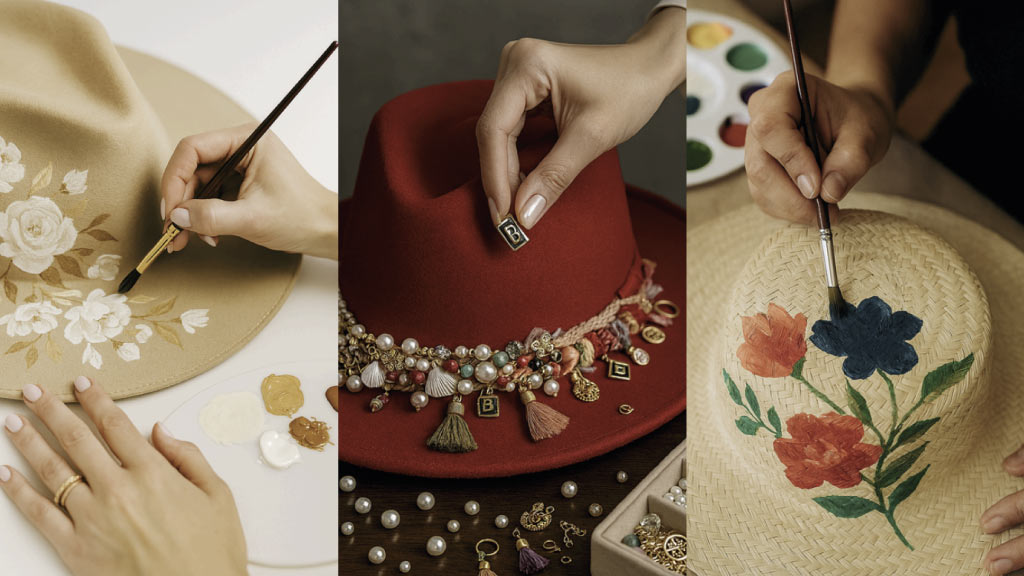
How are Ecuadorian Panama Hats made?
It’s time to walk through the Panama Hat production process in more detail. There are 4 main procedures: palm harvest, palm preparation, hat weaving, and hat processing.
1. Toquilla Palm Harvest
It all starts with the Carludovica palmata plant, which grows in the warm, humid coastal region of Ecuador. This palm is known locally as toquilla.
Skilled farmers select the best palms, then they begin the harvest. The leaves are cut, and the inner fibers are separated. The best quality fibers are carefully selected and passed on to be prepared. At this stage fibers are around a meter long.
2. Toquilla Straw Preparation
To prepare the straw fibers, they are cooked in a large aluminum pot, constantly stirred to keep the stems under the water and to move the straws around.
Once cooked, they are hung out to dry for hours or days under the sun. This step is delicate as the straw needs the perfect texture, strong yet pliable, for weaving. The drying process also lightly bleaches the fibers, giving them the famous creamy Panama Hat color.
After drying under the sun, they’re carefully sorted by quality and color. Of course, hat weavers and factories look for the highest quality toquilla fibers which can be turned into the most prized hats.
3. Panama Hat Weaving
Did you know, the art of weaving the traditional Ecuadorian toquilla hat is recognized on the UNESCO Intangible Cultural Heritage List? Yes, this is a highly skilled profession, where the very best weavers are rightly seen as artists.
Weavers begin by soaking the fibers in water before braiding them into long strands. The strands are then woven into the hat’s shape through intricate techniques like plaiting, twining, and knotting.
Depending on the desired quality, the weave can range from a simple pattern to extremely tight, intricate weaves that take weeks or longer to complete. The finer the weave, the higher the quality of the hat.
Hat weaving is typically done in the early morning or evening when humidity is higher (making the fibers more pliable), and often underground where lighting is dim to protect the delicate fibers from drying out.
4. Panama Hat Processing
Woven hats are ready to be sold to Cuenca’s Panama Hat factories for final processing.
Once the body of the hat is woven, the next step is shaping it. The woven straw is steamed and molded over a wooden block to form the classic Panama hat shape. The process can involve multiple rounds of steaming and molding to achieve the perfect fit and structure.
Hats may also be bleached into different colors before the final touches are added. A hatmaker might incorporate additional materials like ribbons, leather, or beads to enhance the hat’s aesthetic appeal.
Finally, each hat is carefully inspected for quality, ensuring it meets the standards expected of a genuine Panama hat made in Ecuador.
The Panama Hat is now ready to be sold locally to Ecuadorians and tourists, or to be exported to meet worldwide demand.
Ecuadorian Panama Hat FAQ
To finish up, let’s answer some typical tourist questions about Panama Hats.
How much does a Panama Hat cost in Ecuador?
The price of a Panama hat in Ecuador varies according to the quality of the weave. The finer the hat, the higher the price.
In general, a basic Panama Hat in Ecuador will set you back anywhere between US$20 and $50. These basic hats are loose weave and can be found in handicraft markets across the country, as well as fine boutiques. It’s perfect for tourists who like the style without burning a hole in your wallet.
Mid-Range Panama Hats are also popular. These feature a tighter weave and are more carefully crafted. Expect to pay in the range of US$50 to $150.
High-end Panama Hats have a very tight weave due to hours of meticulous handweaving by a master artisan. Prices can range anywhere from US$150 to $500. High-end hats can be found in specialty boutiques or high-end stores.
Finally, for tourists shopping for a Superfino Panama Hat, you’ll most likely be paying US$500+ all the way up to several thousand dollars.
Regardless of the category, it is true that, when buying in Ecuador, you should be able to find high-quality, handwoven hats at a much better price compared to international markets.
How can you tell if a Panama Hat is real?
How to tell the difference between a handwoven Ecuadorian Panama Hat and a machine-made copy?
Start by looking at the label inside the hat. Genuine Panama hats that have been made in Ecuador have a label to prove their place of origin.
Premium Panama hats should also have a maker’s mark or the name of the artisan who crafted them. These details are critical to prove the authenticity of the hat.
Counterfeit hats are often labeled "Panama" but are made elsewhere in factories.
A buyer should also carefully check the quality of the weave. The finer the weave, the more time and skill that went into the hat. The weave should also feel smooth to the touch without gaps or inconsistencies.
Ecuadorian hats are the only ones made from original toquilla straw from the Carludovica palmata plant. This high-quality straw has a fine, silky texture and natural softness.
Also, consider and research the reputation of the seller. Are they recognized experts in the Panama Hat world? Can they tell you about the unique history of the hat, and explain its origin?
Which famous people have worn Panama Hats?
The Panama hat has long been a symbol of style, sophistication, and elegance, with a long list of famous figures from various fields seen sporting these iconic hats.
Here are just a few of the more notable individuals who have worn Panama hats:
- Winston Churchill – Britain’s Prime Minister during World War II often wore a Panama hat, especially during his travels to tropical regions.
- Frank Sinatra - Known for his impeccable fashion sense, the legendary singer and actor often paired the classic hat with his suave suits on stage.
- Theodore Roosevelt – The 26th President of the United States is credited with first popularizing the Panama Hat during his visit to the Panama Canal in the early 1900s.
- Ernest Hemingway - The iconic American author, known for his love of travel and adventure, was frequently seen wearing Panama hats. This popularized the hat in more bohemian, intellectual and artistic circles.
- Audrey Hepburn - The British actress and fashion icon embraced the Panama hat as part of her chic and timeless style.
- Marlon Brando - Another Hollywood icon, Marlon Brando, wore Panama hats in films like The Godfather and in his personal life.
- Clint Eastwood - Known for his roles in Westerns, Clint Eastwood has been photographed wearing a Panama hat both on and off screen.
- Barack Obama - Former U.S. President Barack Obama has been spotted wearing Panama hats during his travels to tropical countries.
- Johnny Depp - Depp’s bohemian fashion choices have helped the Panama hat maintain its cool, edgy appeal.
- Princess Diana - The late Princess Diana was known for her impeccable fashion sense, and she was often seen wearing a Panama hat during her vacations or at public events.
The list goes on. These celebrities and historical figures have helped the Panama hat to maintain its status in a changing world.

Book With The #1 Trusted
Ecuador Travel Agency
Contact us for a FREE TOUR QUOTE – Happy Gringo specialize in customized trips right across Ecuador, Galapagos, the Amazon, and South America including Peru.
Why use Happy Gringo Travel? We’ve helped over 10k happy clients to visit the Galapagos Islands since 2004. With 9 consecutive Trip Advisor Awards of Excellence, and consistent 5-star reviews on Trust Pilot, you are in the safest hands.
In conclusion, the famous Panama Hat in fact has its origin rooted in Ecuador. It was a simple quirk of fate that led to it being named after the wrong country.
Even today, the best quality Panama Hats are woven and produced in Ecuador. For tourists, this is a great opportunity to learn more about this popular hat when you visit the country. It’s even possible to watch master weavers in action, and to visit hat factories.
Best of all, Ecuador is the best place on the planet to pick up a stylish hat at a bargain price 😊


